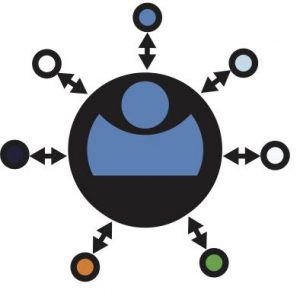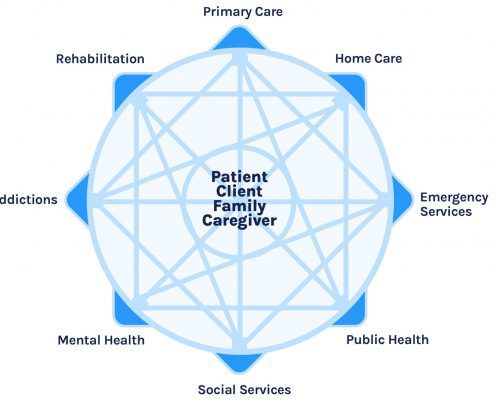One of the early adopters of NOHT-ÉSON’s strategy, Carolyn Askeland, vividly recalls the moment in a NOHT-ÉSON Planning Table meeting when she embraced the transformative power of professional interconnectedness…a unique moment of spontaneous collaboration between the primary care and home care sectors that touched Mary’s life and countless others…
Carolyn (left) says that as part of NOHT-ÉSON’s Planning Table, health care decision-making conversations across various sectors of the system that were once challenging or impossible to arrange are now just as comfortable as the conversation she is having here with her colleague Lisa at CSSN.
Sometime late in her teenage years, Carolyn’s experience as a volunteer with Scouts Canada inspired her to pursue a career in social services. Today, after five years of success as Executive Director of Community Support Services of Niagara (CSSN), Carolyn says she hopes professional health care organizations will reconsider their traditional decision-making approaches and embrace more collaborative policy-making strategies that NOHT-ÉSON is using to revitalize the health system and create better health outcomes for the people of Niagara.
“Collaborative, inter-disciplinary decision-making across the various sectors of the health care system is the surest way to make optimal health outcomes accessible to everyone,” Carolyn says. “Working in silos holds good ideas hostage and makes creative, pragmatic strategies difficult to achieve.”
When the various sectors of the health system interact separately and independently with patients/clients and families/caregivers, (left) an inefficient system of silos is created that often prevents services from reaching everyone effectively. NOHT-ÉSON is well on its way towards creating a seamless system of connections among health care agencies (right) through policy conversations, resource alignment and technological innovations which provide better outcomes for everyone.








